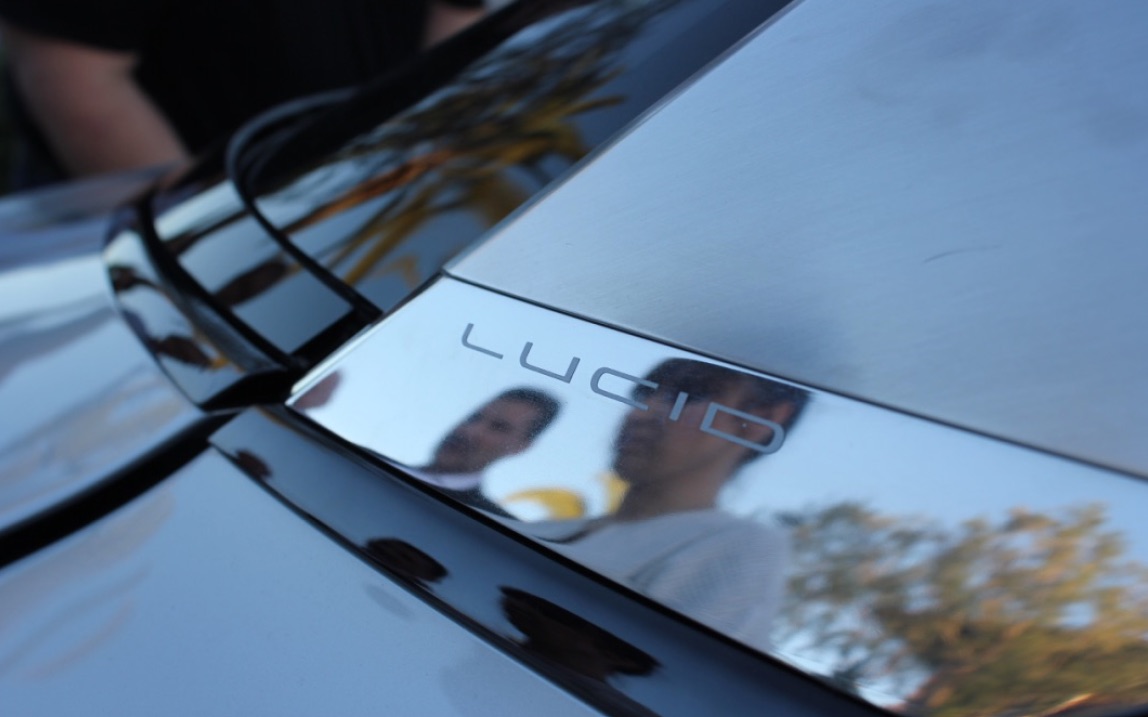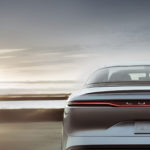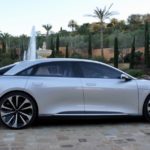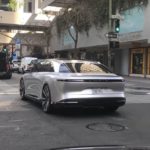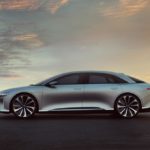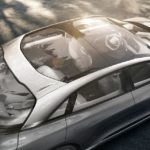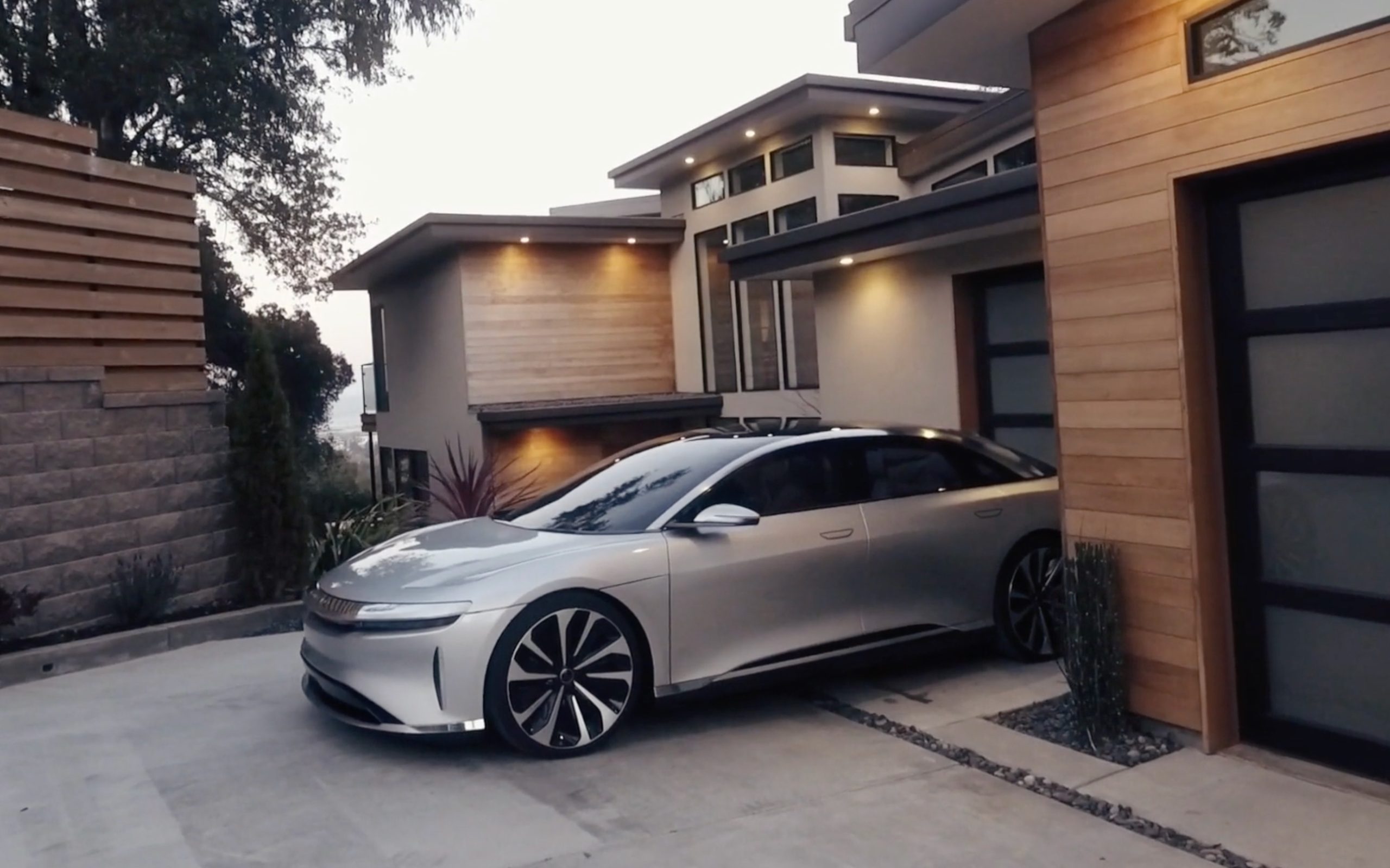
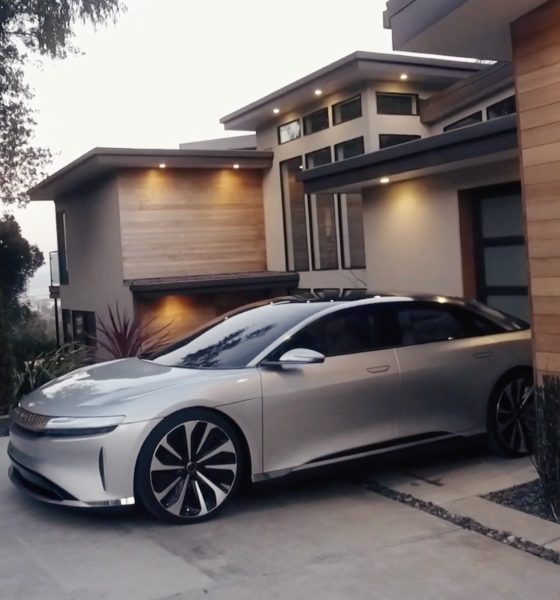
News
Exclusive: A talk with Derek Jenkins, VP of Design at Lucid Motors
The following post comes courtesy of NextMobility.co
I recently had a chance to talk with Lucid Motors VP of Design, Derek Jenkins, about the design philosophy behind the company’s ultra-luxurious Lucid Air. The Silicon Valley-based electric car startup founded in 2007 as Atieva has raised over $130M to date and on the precipice of achieving something no other electric car company within this space, outside of Tesla, has been able to do at scale – float a beautifully executed vision of the not-so-distant future that the greater electric vehicle community actually believes will come to fruition. And, they absolutely can’t wait for it.
Development of Lucid’s electric car platform has been well underway since the beginning of the company, but it wasn’t until 2015 that the first vehicle: the Air, began to take shape. Jenkins, an industry veteran who joined the startup in 2015, is leading the design team at Lucid Motors.
Lucid is aiming directly at the German automakers that historically have dominated the luxury car market. “From the beginning, we were very much focused on a luxury product; we felt like there is still a big opportunity at that end of the market,” says Jenkins. Lucid believes that there will still be a significant amount of time before German luxury auto manufacturers introduce electric vehicles in a meaningful way. “There was a lot of open opportunity to do something that is more forward-facing and less based on tradition, that is kind of the foundation,” said Jenkins.
Lucid says they are taking full advantage of the electric powertrain and the “miniaturization” of the electric motors in their design process, customizing the platform to meet the needs of their design. Lucid’s electric motors, transmission, and differential are all “very compact” compared to the vehicle’s relative power output.
Jenkins tells me that their team rearranged the lithium ion cells in the battery pack to utilize two separate modules, as a way to put more emphasis on opening up interior space. Some areas of Lucid Air’s 130 kWh battery pack is double-stacked, which allowed their designers to maximize interior space by removing certain sections of the vehicle’s floor. The design of the battery pack is a far departure from the single “skateboard” style pack used by Tesla.
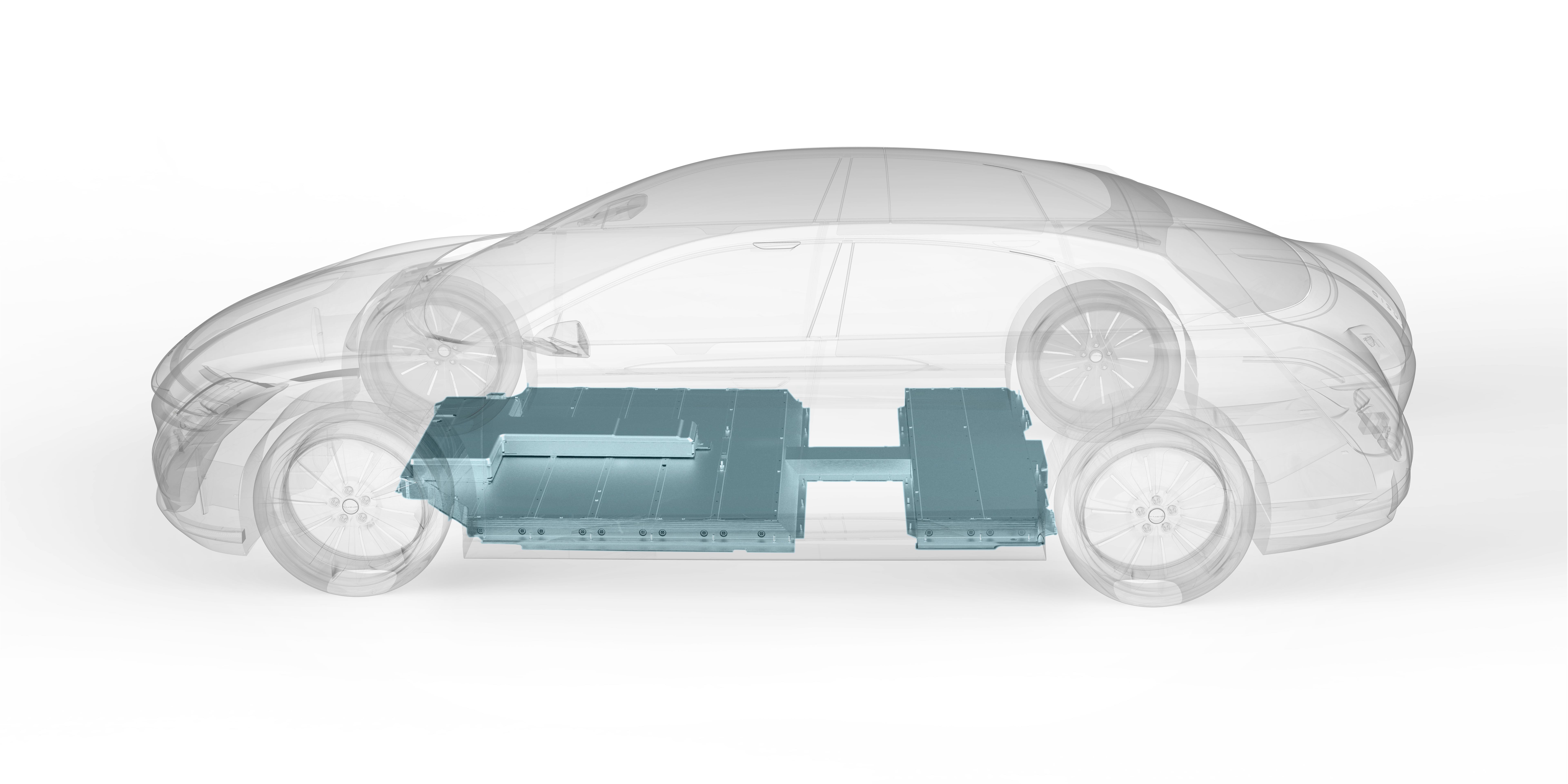
Jenkins tells me that they wanted the interior experience of the car to feel very open, airy, and light. They made the dashboard less bulky, decreased the weight of the doors and focused on letting more air into the car, hence arriving at the name ‘Air’.
Designing for an Autonomous Future
“It’s hard to say whether we will reach full level 5 autonomy in the life cycle of this vehicle.” Jenkins and the Lucid design team made the driver’s area focused on ergonomics. All touch screens are easily within reach and the vehicle is clearly designed with an incredible focus on passenger comfort.
“We’re designing the interior for a dual purpose. I look at that center screen to be used way more in autonomous mode so I can dive into my email or watch TV. You need to create something that someone can be more relaxed in autonomous mode.” – Derek Jenkins, VP of Design at Lucid Motors
Lucid decided not to integrate a fold-away steering wheel, something that other electric car makers are looking to integrate. “We still want the Air to be an amazing driving vehicle, something thoroughly enjoyable to drive and feel physically connected to the car,” says Jenkins.
One design feature that Jenkins highlighted was the Air’s use of brushed aluminum trim that is said to come with a big wow-factor. Designing a vehicle for the future while making it appealing to current customers was a constant balancing act for the Lucid design team.
Still, Lucid reemphasizes Air’s target market will be the typical German luxury sedan buyer. Jenkins says that the Air is designed to have an overall vehicle size of a mid-size luxury sedan (E-Class), but with the luxurious interior of a large luxury sedan (S-Class), and the driving performance and design of a coupe class (CLS-Class). “This is the redefinition of luxury in a real modern sense”.
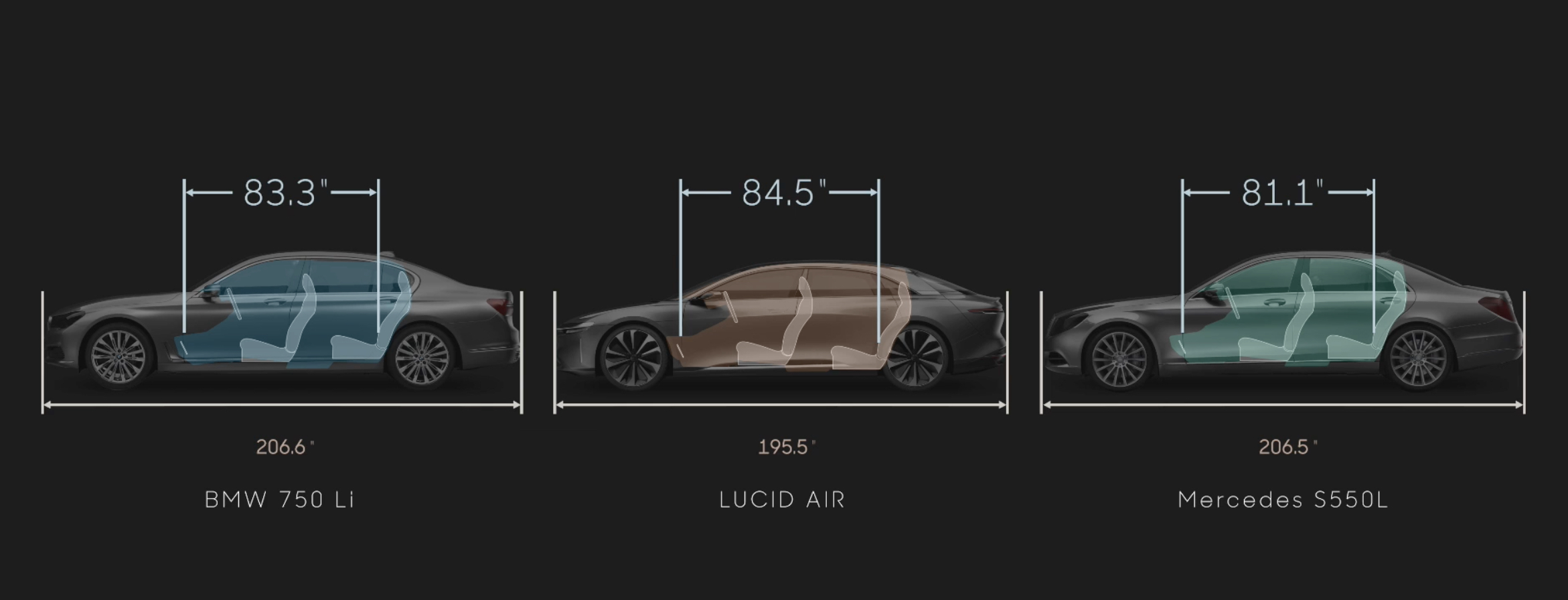
Making the leap to Lucid Motors
Jenkins joined Lucid Motors in July of 2015 and was previously Director of Design at Mazda North America. Jenkins has nearly 25 years of design experience from Audi, VW, and Mazda, and lead the design of many vehicles, including the new 2016 Mazda Miata, VW Scirocco Concept, and Mazda 6. Jenkins, an industry design leader, took a huge risk jumping from a leadership position at Mazda to a Silicon Valley startup, but has no regrets.
“I had been in the industry designing cars for over 20 years… I was sensing a lot of change in the horizon towards electrification; I witnessed the success at Tesla… It was just too attractive to pass up,” said Jenkins.
Lucid expects to attract customers that expect to have an ultra-luxurious interior in the form of a “private jet on wheels“, and new focus on technology and an advanced powertrain. While many are quick to jump to the conclusion that Lucid will have an uphill battle in a market dominated by Tesla, Jenkins says that they didn’t design the Air to be a “Tesla killer”. Rather, the company aims to produce a vehicle that is fundamentally different than Tesla’s offerings.
Jenkins notes that Lucid has been able to keep their headcount low during the development of the vehicle, so they can easily collaborate with other areas within the company and form quick divisions. “It’s a huge advantage, it’s really much more of a form and function exercise, for me as a designer. At the big companies, you are really styling over a given architecture. Here we are actually working together to create a great piece of design and engineering. That’s a big difference.”
First production of Lucid Air is expected in 2019. The company has been raising capital to fund development on a planned $700 million electric vehicle factory in Casa Grande, Arizona.

News
Tesla launches its new branded Supercharger for Business with first active station
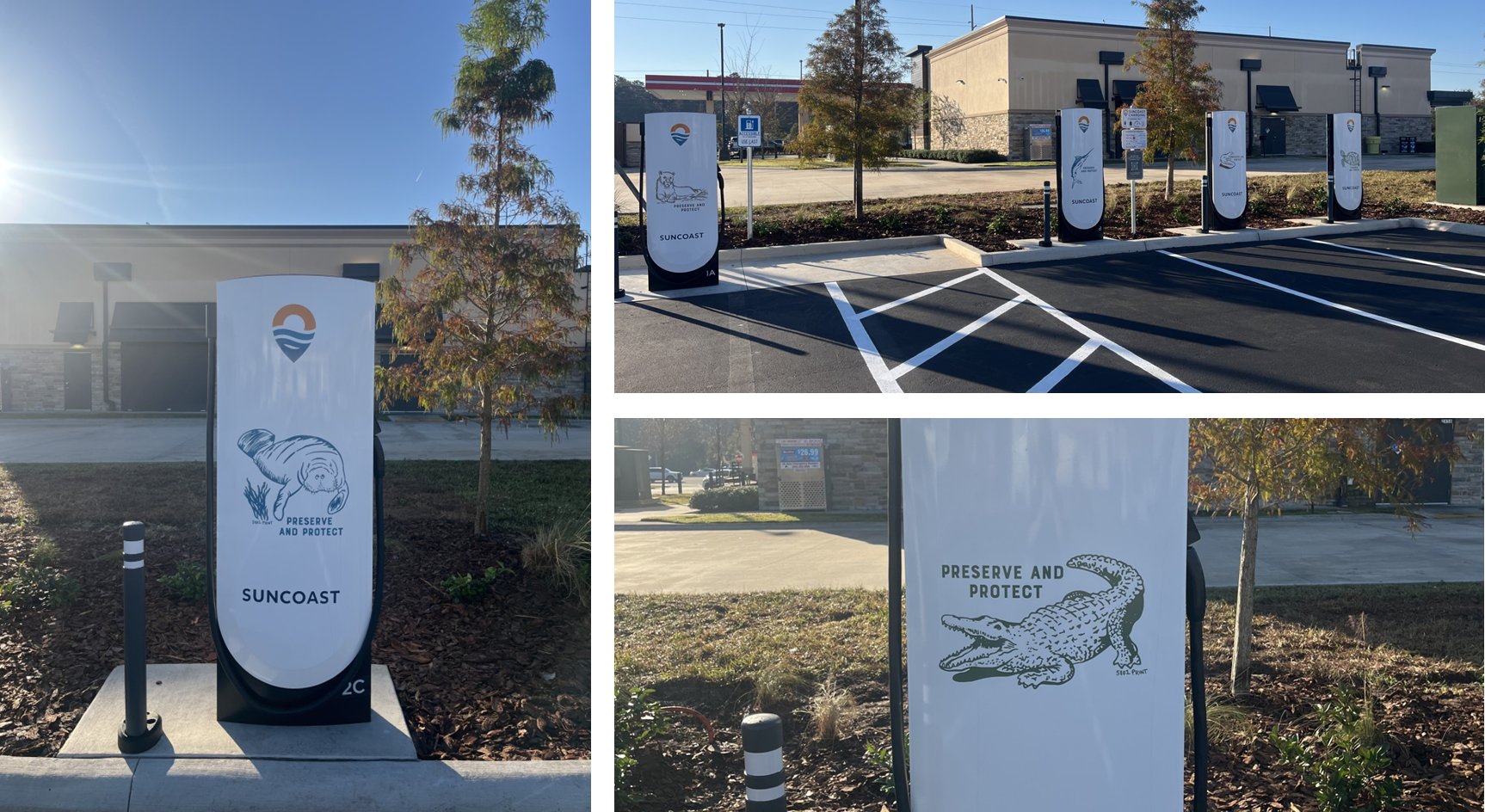
Tesla has officially launched its first branded Supercharger just months after initiating a new program that allows third-party companies to brand their own charging piles.
The site opened in Land O’ Lakes, Florida, and features eight V4 Supercharging stalls offering up to 325 kW of charging speed. It appears it was purchased by a company called Suncoast Credit Union. This particular branch is located Northeast of Tampa, which is on the Gulf of Mexico.
It features graphics of Florida animals, like alligators:
Here’s a video of the graphics being installed on the Tesla Superchargers at this site: https://t.co/oIfEPNZjAH pic.twitter.com/ENWakZ2qT9
— TESLARATI (@Teslarati) November 20, 2025
Tesla launched this program back in September, and it basically was a way to expand its Supercharger presence and also allow companies to pay for the infrastructure. Tesla maintains it. When it announced the “Supercharger for Business,” it said:
“Purchase and install Superchargers at your business. Superchargers are compatible with all electric vehicles, bringing EV drivers to your business by offering convenient, reliable charging.”
The program does a few things. Initially, it expands EV charging infrastructure and makes charging solutions more readily available for drivers. It can also attract people to those businesses specifically.
Tesla launches new Supercharger program that business owners will love
The chargers can also be branded with any logo that the business chooses, which makes them more personalized and also acts as an advertisement.
The best part is that the customers do not have to maintain anything about the Supercharger. Tesla still takes care of it and resolves any issues:
“We treat your site like we treat our sites. By providing you with a full-service package that includes network operations, preventative maintenance, and driver support, we’re able to guarantee 97% uptime–the highest in the industry.”
It appears the Superchargers will also appear within the in-car nav during routing, so they’ll be publicly available to anyone who needs to use them. They are still available to all EVs that have worked with Tesla to utilize its infrastructure, and they are not restricted to people who are only visiting the business.
Cybertruck
Tesla reveals its Cybertruck light bar installation fix
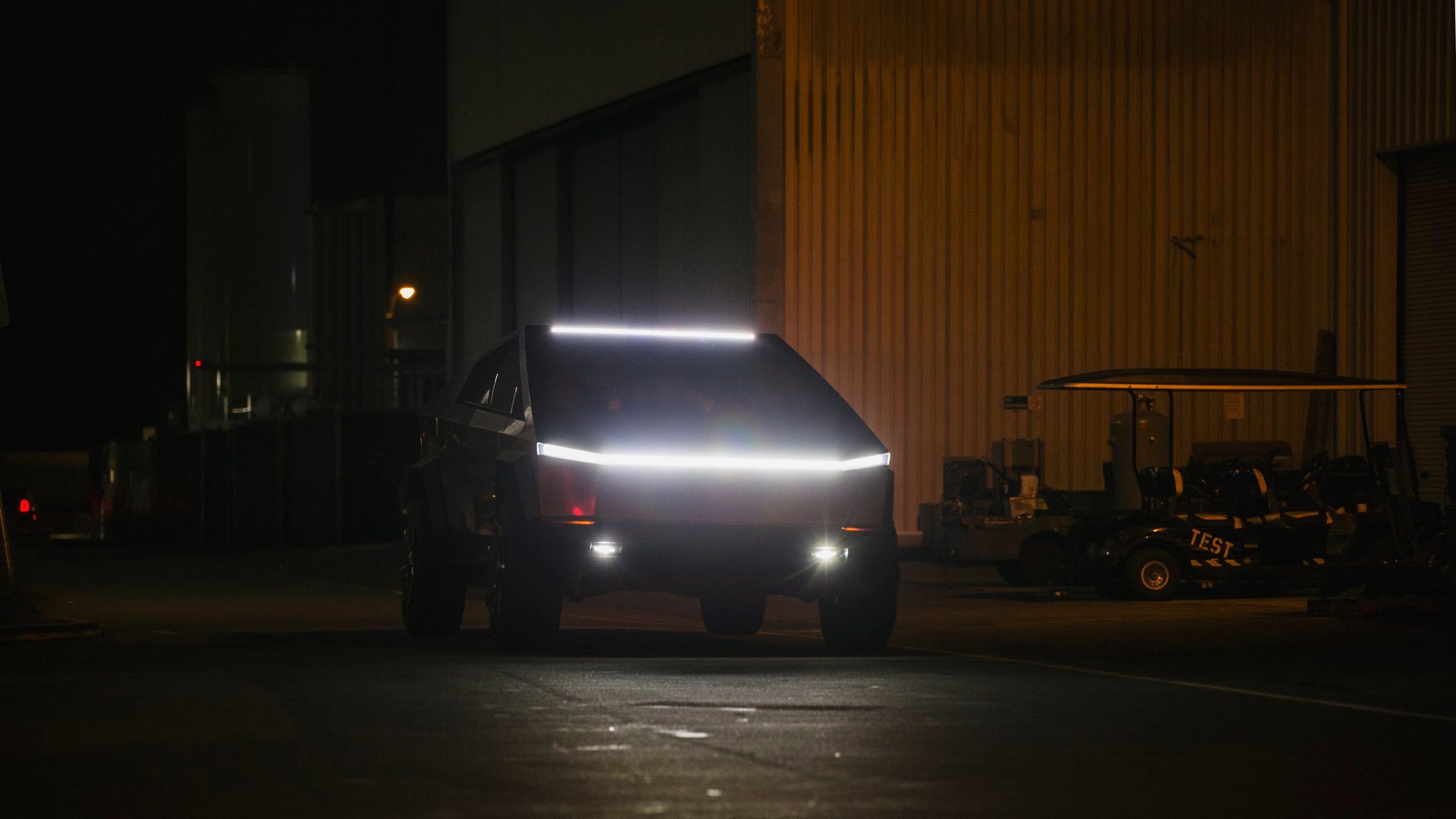
Tesla has revealed its Cybertruck light bar installation fix after a recall exposed a serious issue with the accessory.
Tesla and the National Highway Traffic Safety Administration (NHTSA) initiated a recall of 6,197 Cybertrucks back in October to resolve an issue with the Cybertruck light bar accessory. It was an issue with the adhesive that was provided by a Romanian company called Hella Romania S.R.L.
Tesla recalls 6,197 Cybertrucks for light bar adhesive issue
The issue was with the primer quality, as the recall report from the NHTSA had stated the light bar had “inadvertently attached to the windshield using the incorrect surface primer.”
Instead of trying to adhere the light bar to the Cybertruck with an adhesive, Tesla is now going to attach it with a bracketing system, which will physically mount it to the vehicle instead of relying on adhesive strips or glue.
Tesla outlines this in its new Service Bulletin, labeled SB-25-90-001, (spotted by Not a Tesla App) where it shows the light bar will be remounted more securely:
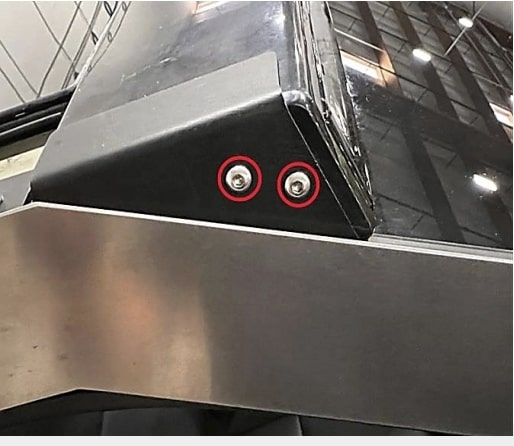
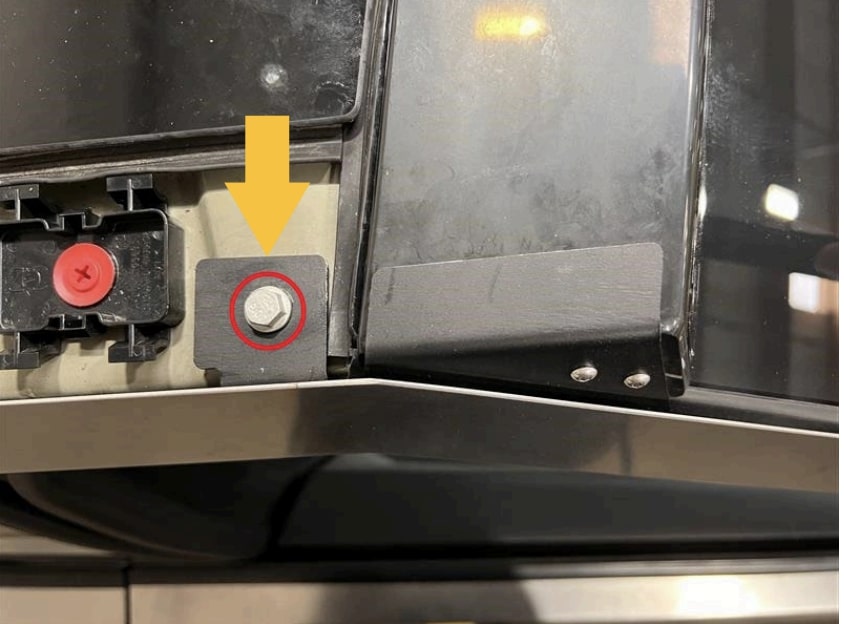
The entire process will take a few hours, but it can be completed by the Mobile Service techs, so if you have a Cybertruck that needs a light bar adjustment, it can be done without taking the vehicle to the Service Center for repair.
However, the repair will only happen if there is no delamination or damage present; then Tesla could “retrofit the service-installed optional off-road light bar accessory with a positive mechanical attachment.”
The company said it would repair the light bar at no charge to customers. The light bar issue was one that did not result in any accidents or injuries, according to the NHTSA’s report.
This was the third recall on Cybertruck this year, as one was highlighted in March for exterior trim panels detaching during operation. Another had to do with front parking lights being too bright, which was fixed with an Over-the-Air update last month.
News
Tesla is already expanding its Rental program aggressively
The program has already launched in a handful of locations, specifically, it has been confined to California for now. However, it does not seem like Tesla has any interest in keeping it restricted to the Golden State.
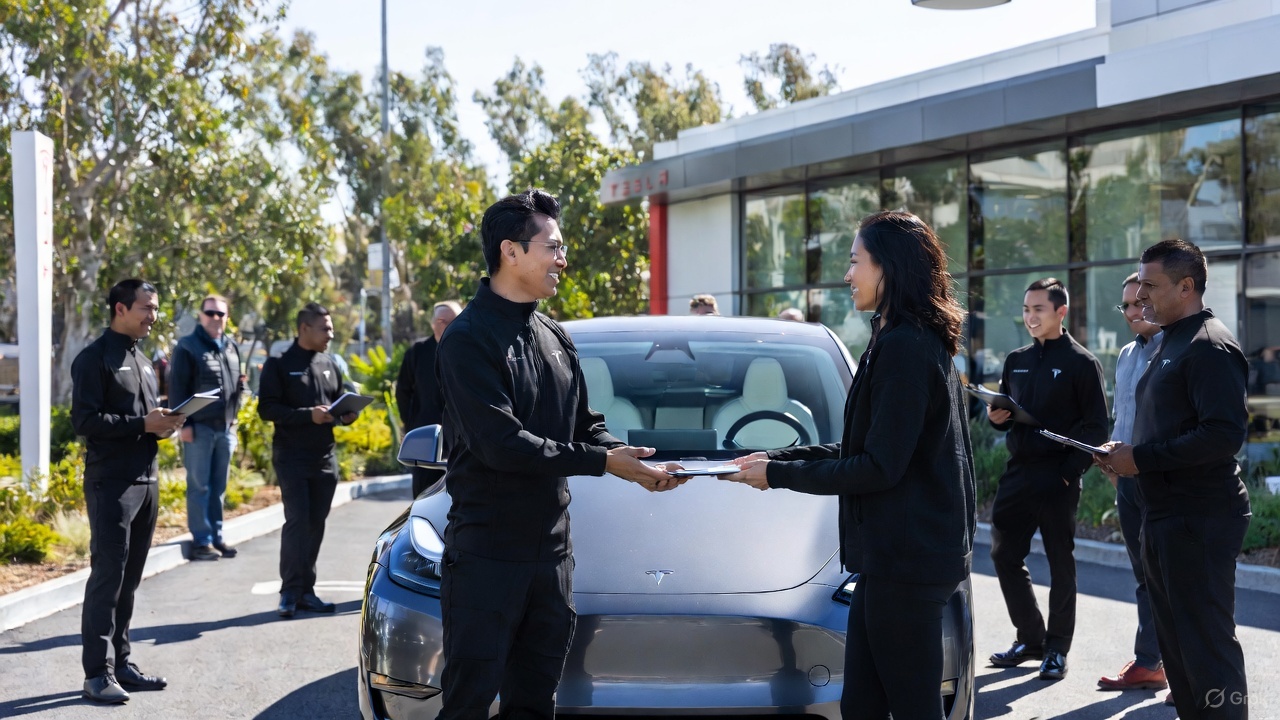
Tesla is looking to expand its Rental Program aggressively, just weeks after the program was first spotted on its Careers website.
Earlier this month, we reported on Tesla’s intention to launch a crazy new Rental program with cheap daily rates, which would give people in various locations the opportunity to borrow a vehicle in the company’s lineup with some outrageous perks.
Along with the cheap rates that start at about $60 per day, Tesla also provides free Full Self-Driving operation and free Supercharging for the duration of the rental. There are also no limits on mileage or charging, but the terms do not allow the renter to leave the state from which they are renting.
🚨🚨 If you look up details on the Tesla Rental program on Google, you’ll see a bunch of sites saying it’s because of decreasing demand 🤣 pic.twitter.com/WlSQrDJhMg
— TESLARATI (@Teslarati) November 10, 2025
The program has already launched in a handful of locations, specifically, it has been confined to California for now. However, it does not seem like Tesla has any interest in keeping it restricted to the Golden State.
Job postings from Tesla now show it is planning to launch the Rental program in at least three new states: Texas, Tennessee, and Massachusetts.
The jobs specifically are listed as a Rental Readiness Specialist, which lists the following job description:
“The Tesla Rental Program is looking for a Rental Readiness Specialist to work on one of the most progressive vehicle brands in the world. The Rental Readiness Specialist is a key contributor to the Tesla experience by coordinating the receipt of incoming new and used vehicle inventory. This position is responsible for fleet/lot management, movement of vehicles, vehicle readiness, rental invoicing, and customer hand-off. Candidates must have a high level of accountability, and personal satisfaction in doing a great job.”
It also says that those who take the position will have to charge and clean the cars, work with clients on scheduling pickups and drop-offs, and prepare the paperwork necessary to initiate the rental.
The establishment of a Rental program is big for Tesla because it not only gives people the opportunity to experience the vehicles, but it is also a new way to rent a car.
Just as the Tesla purchasing process is more streamlined and more efficient than the traditional car-buying experience, it seems this could be less painful and a new way to borrow a car for a trip instead of using your own.
